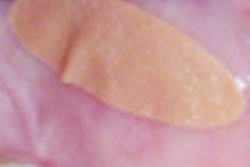A bacterium that has been associated with the development of periodontal disease has been detected in colon tumors, according to new research that suggests it may set the stage for colorectal cancer (Genome Research, October 18, 2011).
Scientists at the Dana-Farber Cancer Institute and the Broad Institute found an abnormally large number of Fusobacterium in nine colorectal tumor samples, a sign that it might contribute to the disease and potentially be a key to diagnosing, preventing, and treating it. While the spike does not necessarily mean the bacterium helps cause colorectal cancer, it offers an enticing lead for further research, according to the study authors.
A confirmed connection between Fusobacterium and the onset of colorectal cancer would mark the first time any microorganism has been found to play a role in this type of cancer, which is the second-leading cause of cancer deaths in the U.S.
The discovery was made by sequencing the DNA within nine samples of normal colon tissue and nine of colorectal cancer tissue, and validated by sequencing 95 paired DNA samples from normal colon tissue and colon cancer tissue, the researchers explained. Analysis of the data turned up unusually large amounts of Fusobacterium's signature DNA in the tumor tissue.
While the relationship -- if any -- between colorectal cancer and Fusobacterium is unclear, there are intriguing hints that the bacterium may play a role in the cancer, according to senior study author Matthew Meyerson, MD, PhD, co-director of the Center for Cancer Genome Discovery at Dana-Farber and a professor of pathology at Harvard Medical School. Previous studies have suggested that Fusobacterium is associated with inflammatory bowel diseases such as ulcerative colitis, which can raise people's risk of developing colon cancer.
"At this point, we don't know what the connection between Fusobacterium and colon cancer might be," Meyerson stated in a news release. "It may be that the bacterium is essential for cancer growth, or that cancer simply provides a hospitable environment for the bacterium. Further research is needed to see what the link is."



















